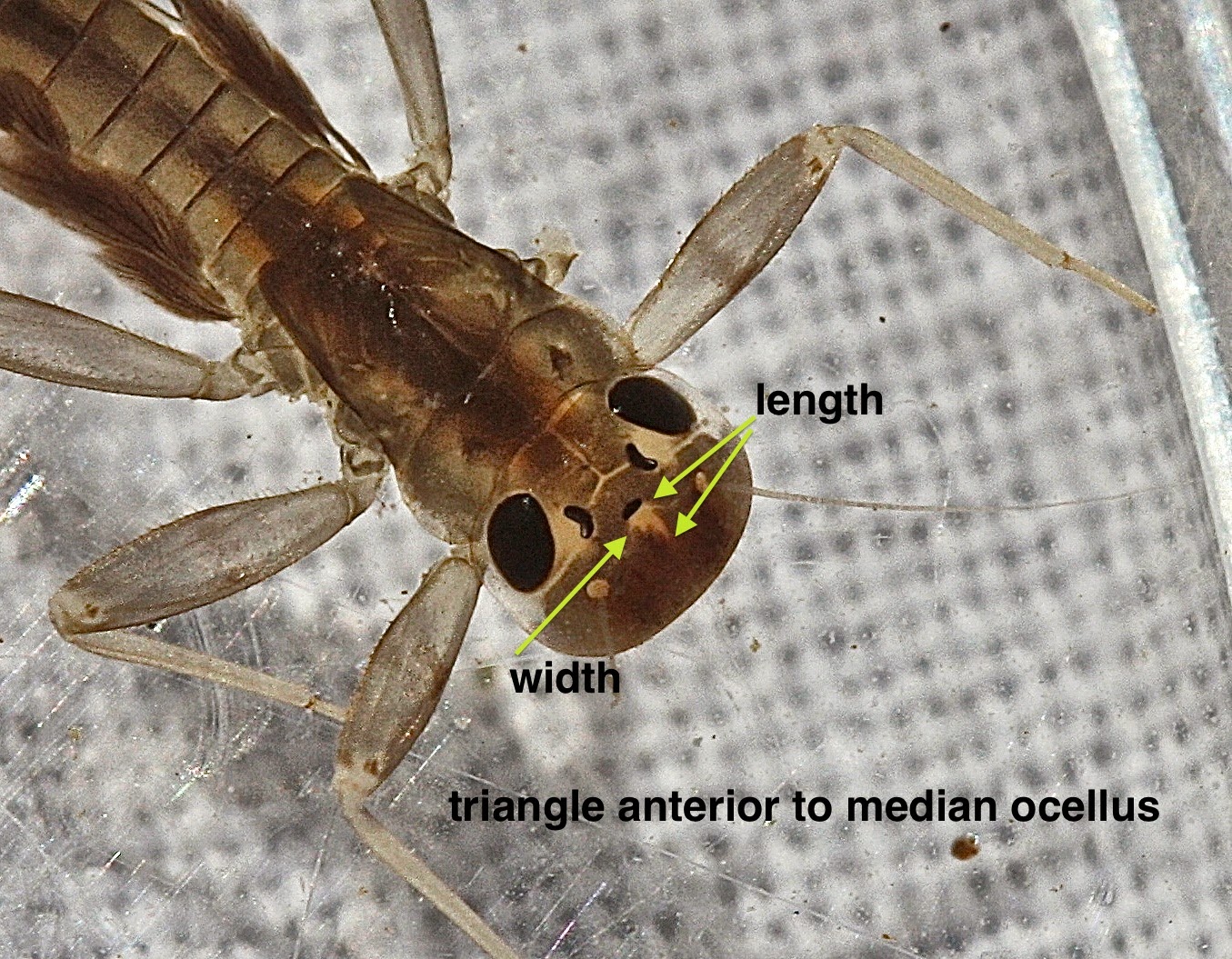We have flooding conditions in central Virginia after 5+ inches of rain dumped into rivers and streams that were already high. Roads are closed to some of my sites, and even small streams are raging out of control. I might get into some streams by next weekend -- but I'm concerned about what I will find. Insect populations were surely affected by these rushing waters. So, time for some "back burner" projects.
We've recently noted that species ID for Leucrocuta and Maccaffertium flatheads, in many cases, has not been resolved to anyone's satisfaction. The same is true for Rhithrogena and Stenacron nymphs. Beaty recently told me (e-mail) that species ID for family Heptageniidae nymphs (the flatheads) still requires a whole lot of work. So an "update" might be in order for the Rhithrogena and Stenacron nymphs that we've found, so far, in our streams.
__________________________
I. genus Rhithrogena
Rhithrogena flatheaded mayflies have gills that resemble those of Epeorus flatheaded mayflies: they are discs surrounding the tergites spreading out like a fan, acting like suction cups to help these "clingers" hold onto the rocks in fast-flowing water. However, Rhithrogenas have three tails, not two, and on the underside of the nymph, the gills touch at the top of the bottom forming an oval (Epeorus gills do not meet at the back end).
In the first EPT list for central Virginia that I posted, the Rhithrogena in the photo at the top of the page was identified as R. jejuna. That ID was based on the fact that it matched the photo of R. jejuna posted by Donald Chandler (see: http://www.discoverlife.org/mp/20q?search=Rhithrogena+jejuna). But Beaty does not list R. jejuna as a species found in NC ("The Ephemeroptera of North Carolina," p. 22), and in other sources I've now discovered that R. jejuna is only found in the northern tier of the country. When Beaty looked at my photo he said that it might be R. exilis which he describes in the following way: "terga 1 and 2 pale yellow, 3-6 reddish brown, 7 pale; middle portion of head yellow or light brown contrasting with darker lateral areas." (p. 22) This is a pretty good match. The middle of the head certainly contrasts with the sides, and terga 1 and 2 are pale yellow (look between the wing pads). But on my nymph, tergite 7 is not at all pale while terga 8 and 9 certainly are.
So, the species ID is uncertain. Beaty himself says that he's not at all comfortable taking the Rhithrogenas to the level of species: more work needs to be done.
Some of the other Rhithrogenas I've found...
1. could be R. uhari: "abdominal tergites light chestnut or cinnamon brown with no pattern." ???
2. could be R. amica: "mostly all brown but there may possibly be two distinct color patterns." ??? The description doesn't really narrow it down.
and there are others.
In Beaty's descriptions, the colors are very important. But I can't be certain of any species ID with the insufficient data that he can provide at this point of the game.
I've found Rhithrogenas in the Lynch River and Buck Mt. Creek in March, April and May. Not sure I'll get a chance to see any this year. If I do, I'll probably leave them at the level of genus.
_______________
II. genus Stenacron
Where do we stand with the Stenacron nymphs in our streams? Beaty describes three different Stenacron species: carolina, interpunctatum, and pallidum. ("Ephemeroptera," pp. 22-23) I think we've seen all three in our streams, but I need to find more specimens to be sure.
1. Stenacron interpunctatum.
I feel pretty good about this ID. "nymphs 8-11 mm: 7-10 spines on maxillary crown; white streaks, often in H-pattern on tergites 8-9; caudal filaments with alternating banding pattern. A spring and summer species. The most common and tolerant Stenacron species in NC." (Beaty, p. 22) There are obviously white streaks on the abdominal terga, and we can also see the banding on the tails.
I found this nymph in June, 2011 in the Mechunk. That's so-so water, so this is clearly a tolerant species.
2. Stenacron pallidum
This is a "maybe."
"S. pallidum -- nymphs 6-8 mm; pale triangular spot anterior to median ocellus approximately as long as wide (provisional); 11-13 spines on maxillary crown; usually all grey-brown, but can have pale streaks or "H" but thinner and less conspicuous than in S. interpunctatum." (pp. 22-23)
The color is right; so too is the size of the pale triangle in front of the median ocellus.
But this nymph is immature. I need to find a mature one and look at the spines on the maxillary crown to be certain of my ID.
3. Stenacron carolina
This too is a "maybe."
My friend in Sugar Hollow found this one in April in the small headwater stream that flows by her house. The photo is hers.
Beaty: "S. carolina -- nymphs 10-13 mm; length of pale triangular spot anterior to median ocellus approximately 2X it's basal width (provisional); 7-10 spines on maxillary crown; dorsum of abdomen grey-brown without conspicuous markings; caudal filaments all light grey-brown with no banding. Usually in small mountain streams. Collected spring to summer. Uncommon."
The color is right. So too is the size of the pale triangle in front of the median ocellus.
From what we can see of the tails (caudal filaments), I'd say they're unbanded. And she's found a number of things in her "small mountain stream" that were "uncommon." Still, we need to preserve one of these nymphs to see the spines on that crown.
________________
This is the time to look for these flatheaded mayflies. But the weather just isn't our friend.













No comments:
Post a Comment